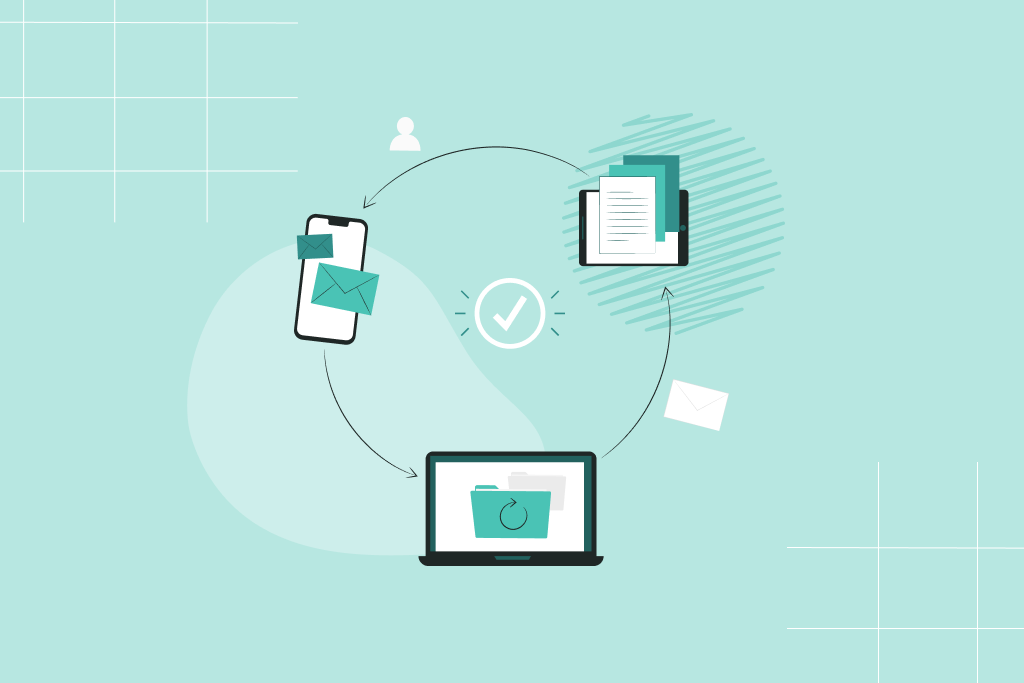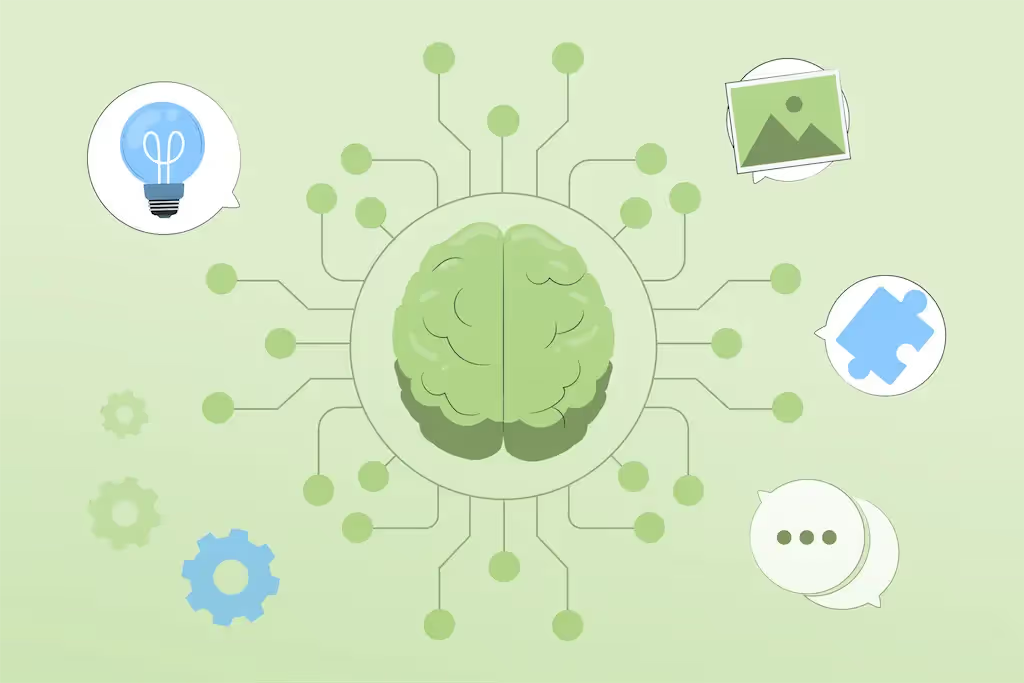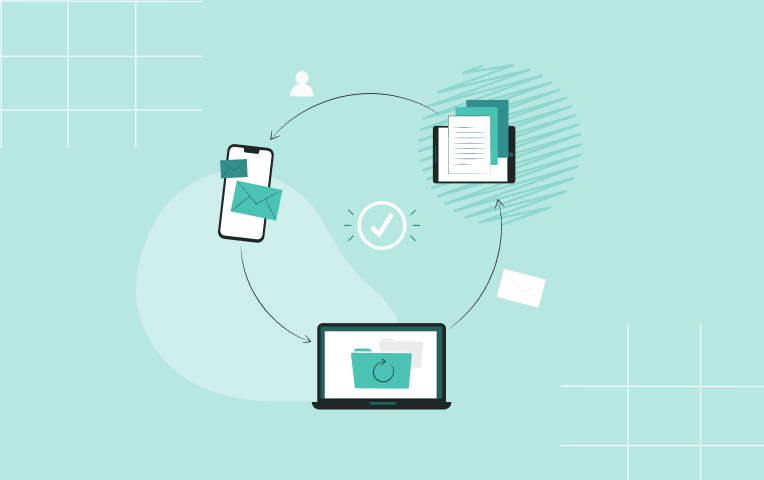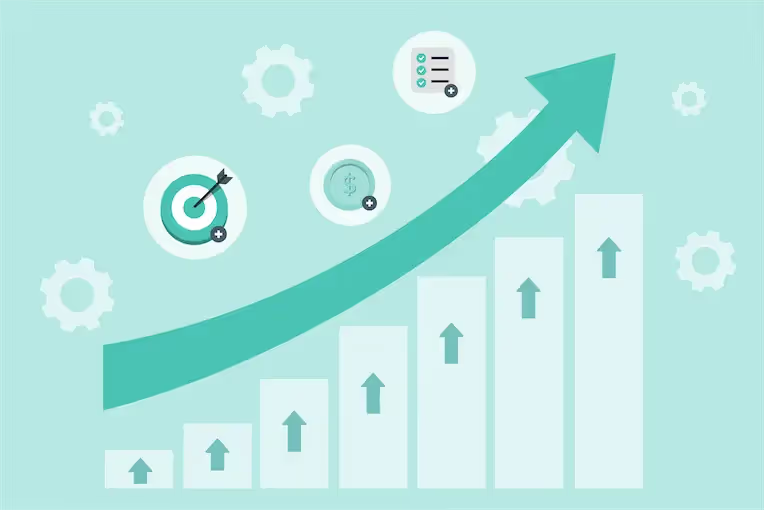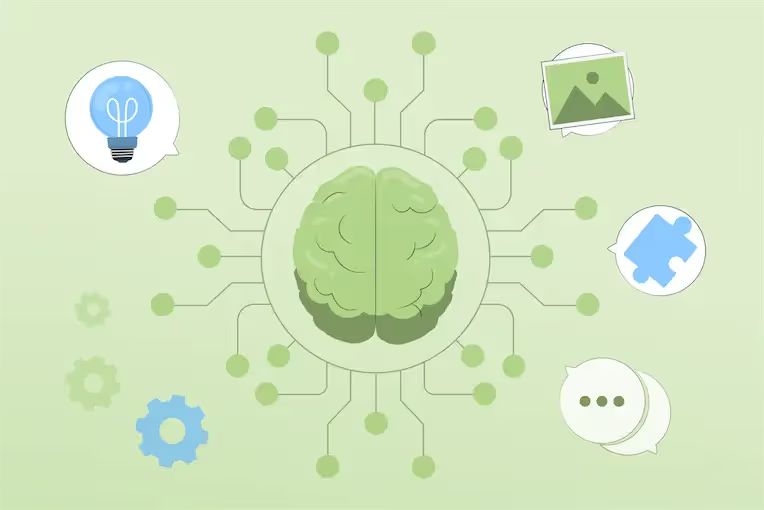Company growth is exciting because it signals success—your business is thriving, attracting new talent, and opening the door to fresh opportunities. But growth also brings challenges. As workloads increase, processes slow down, data errors creep in, deadlines get missed, and the candidate experience suffers. What worked before may no longer be enough as your organization scales.
That’s where human resources software comes in. The right HR management software helps you do more with less—automating manual tasks, streamlining processes, ensuring consistency and compliance, improving both the employee and candidate experience, and providing data-driven insights to guide smarter decisions. HR systems help organizations stay organized and empower HR teams to focus on people, not paperwork. That's why investing in HR management software at the right time sets your business up to scale smoothly and sustainably.
So, when is the right time to invest? Let’s break it down.
7 clear signs it’s time to buy HR software
Not sure if your current HR system is keeping up with your business, or if it’s time to implement a new one? Here are seven clear signs your current HR system may be falling short. If any of these sound familiar, it could be the right time to invest in an HR system that will scale with your growth.
- Hiring volume is rising
If your recruiting is spread across multiple spreadsheets or your monthly hiring volume keeps climbing, it’s a sign you need an HR system. The right human resources software streamlines recruitment, centralizes data, and saves time so everything runs smoothly.
💡KPI to watch: Average time-to-fill open roles
- Onboarding takes too long
When your onboarding process is manual or takes weeks or months, it can impact the candidate experience and productivity, making it harder to attract and retain top talent. HR software streamlines onboarding with automated tools, setting up new hires for success from day one.
💡KPI to watch: Onboarding duration
- Recurring errors and manual processes
If you're constantly correcting errors, entering data manually, or scrambling to meet deadlines, your current system is holding you back. A modern HR system centralizes records, reduces errors, and maintains compliance with automated workflows that ensure accuracy and efficiency.
💡KPI to watch: Onboarding duration
- Time wasted on admin tasks
Does your HR team spend too much time handling requests for pay stubs, vacation balances, clock-ins, shift swaps, and more? HR software reduces administrative redundancy, boosts productivity, and enhances the employee experience, so HR can focus on building workplaces people love.
💡KPI to watch: Onboarding duration
- Lack of reporting capabilities
With limited visibility into workforce data and reporting, planning turns into guesswork. An HR management system lets you spend less time sourcing employee data and more time acting on it. With advanced analytics, HR systems provide real-time data and deep workforce insights that support smarter, strategic decisions.
💡KPI to watch: Time spent gathering data vs. time spent analyzing and acting on it
- Multiple disconnected tools
Disconnected systems limit data sharing and collaboration between departments, increasing the risk of errors, compliance issues, and missed opportunities. An integrated HR system combines key HR and payroll processes into a single platform, streamlining operations, improving accuracy, and reducing administrative burden.
💡KPI to watch: Number of separate tools used for HR tasks
- You are planning to expand into new regions
Expanding your workforce into new provinces or countries adds complexity. An HR system helps you stay organized and manage compliance, taxes, and local regulations—ensuring everything runs smoothly as you grow.
💡KPI to watch: Time spent managing multi-region compliance requirements
Which HR system fits your stage?
The type of HR system that’s right for your business depends on your company’s stage and growth journey. A startup and an enterprise differ considerably in complexity and headcount, which means they also have different requirements when it comes to choosing the best HR management system. As your business grows, your HR processes will evolve, and your HR management software should evolve along with them.
Small business(1–75 people):
Small businesses are known for their lean teams, innovative ideas, and big ambitions, which means agility matters most. At this stage, a full suite HR management system that offers a modular-based approach can help reduce administrative burden and keep things simple. This means your company can scale as you continue to grow. Look for HR management tools that support applicant tracking, digital onboarding, and centralized employee records, so your team can stay focused on driving rapid growth.
Mid-market (75–900):
At the mid-market stage, manual processes can’t keep up with a rapidly expanding workforce. This is the time to move beyond a basic HR system and adopt a more robust, strategic HR management software. Look for advanced HR management tools that automate workflows, streamline time-off requests and scheduling, support consistent performance reviews, and deliver advanced reporting features to help you make smarter, data-driven decisions.
Enterprise (901+):
For large-scale enterprises, HR becomes a key driver of business impact. Your HR management system needs to be robust enough to handle complex organizational structures, advanced operations, and data-driven decision-making. Look for features such as seamless integrations with payroll, ERP (enterprise resource planning), and other core systems, strong compliance and security measures, role-based access, and advanced analytics to support strategic workforce planning.
What to look for in the right software for human resource management
When evaluating human resources software in Canada, look for features that go beyond basic processing and administration, and deliver long-term value. The right HR management solution should provide a seamless user experience for all teams and help your organization scale effectively. Key criteria include:
- Core features: Look for Canadian HR software that includes HR management features such as applicant tracking (ATS), onboarding, centralized employee records, and advanced reporting features.
- Integration capabilities: Choose an all-in-one HR software that integrates seamlessly with payroll, accounting, and other critical business operations and systems.
- Security & compliance: Choose a Canadian HR software solution with strong data protection, built-in compliance features, and Canadian data residency where required to reduce the risk of security breaches or unauthorized access, and help meet both internal and external audit requirements.
- Ease of use: The right human resources management software should have an intuitive design, easy navigation, and employee self-service tools that allow managers, HR teams, and employees to access important information quickly—reducing frustration and unnecessary back-and-forth.
- Implementation & support: Choose a Canadian HR software provider that supports your business at every step, from implementation and onboarding to ongoing training. You want to ensure the HR system provider has a proven track record of success and a clear product roadmap to ensure long-term value.
- Pricing model: Be upfront about pricing and ensure the HR software provider’s model—whether per-employee, tiered plans, or add-on costs—aligns with your organization’s goals and budget.
For a more in-depth guide to successful human resource software implementation, check out our HR system implementation tips.
Cost vs. ROI: Estimating value from HR software
Investing in HR management software is worthwhile when you consider the return it delivers over time. The right HR system can save time, reduce turnover, speed up the time-to-fill positions, and minimize costly compliance risks. Below is a simple ROI model to help illustrate the value and measurable payback an HR system can provide as your business grows.
Example ROI model:
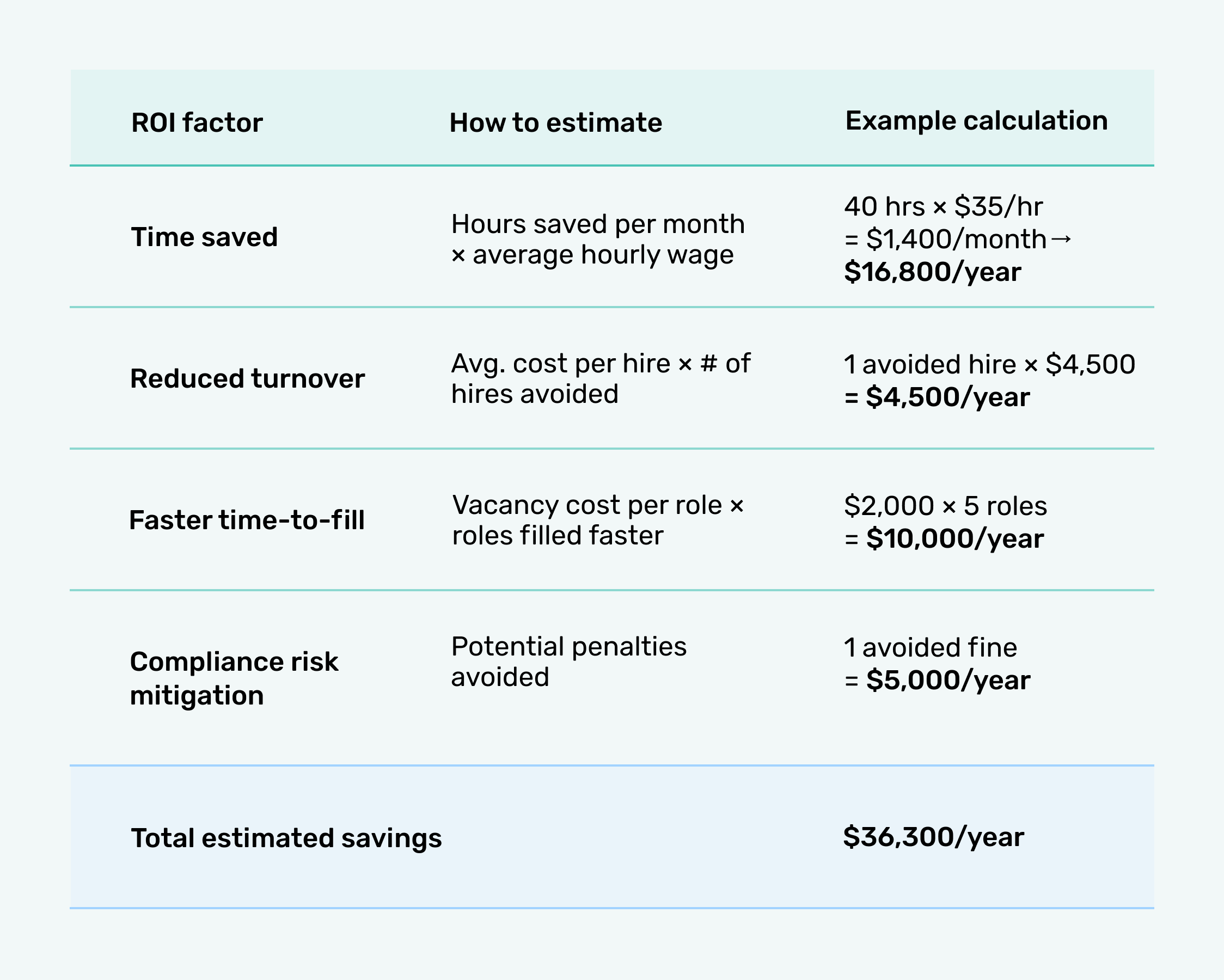
To figure out the payback period, start by looking at the estimated savings. In this example, the HR system delivers about $36,300 in savings per year. Spread over 12 months, that works out to roughly $3,025 in savings per month.
Next, compare this to the cost of the system. For a company with 100 employees paying $12 per employee per month, the HR software would cost $14,400 annually.
To calculate the payback period, divide the annual cost by the monthly savings. In this case, $14,400 ÷ $3,025 ≈ 4.8 months. This means the software covers its own cost in just under five months, and every month after that represents a positive return on investment.
Real results: How Avanti helped Servus Credit Union become 40% more efficient
When Servus Credit Union merged with two large credit unions, its workforce grew dramatically, creating an urgent need for tools that could streamline HR and payroll, reduce redundancies, and scale with its growth.
With Avanti’s HR management system, Servus Credit Union achieved significant results:
- Unified HR system: Merged three companies into one with an easy-to-use, configurable platform.
- 40% increase in HR and payroll efficiency: Streamlined processes saved time and reduced errors.
- 1,400+ employees consolidated: All staff now managed within a single system.
Want to see the full story? Read the case study to discover how Avanti helped Servus Credit Union scale its HR and payroll operations with faster, easier, and more efficient tools.
Make the call
A growing company needs human resource software that can support them at every stage of their growth. Knowing when it’s the right time to invest in HR software can make a big difference in your growth journey, and when the time comes, the right choice can set your team up for long-term success.
That’s where Avanti comes in. Avanti’s modern Canadian HR software brings every stage together in one seamless human capital management system, allowing you to automate busywork, simplify processes, and keep your team supported.
Designed for growing companies, Avanti offers a full suite of powerful HR management tools and payroll expertise. From applicant tracking and onboarding to Canadian payroll and advanced reporting, you can be confident that all your processes are accurate, compliant, and scalable.
FAQs
- When should a small business invest in human resources software?
Small businesses should consider investing in an HR system once admin and hiring tasks begin taking up too much time and pulling focus away from core initiatives. This typically happens when the company size reaches 15–25 employees or when hiring frequency increases, making spreadsheets and manual processes inefficient. - What HR management features should I prioritize first?
- For the fastest ROI, prioritize ATS, digital onboarding, and centralized employee data.
- How much does HR software cost for SMBs?
- The cost of HR software for SMBs varies by vendor and pricing model, typically per-user or tiered. Be sure to budget for licenses, implementation, and training. Most companies see payback within months through reduced admin time and faster hiring.
- Are cloud HR systems safe for Canadian companies?
Yes. Many Canadian HR management system providers offer compliance features, including Canadian data residency options and strong security certifications like SOC-2. - How long does HR software implementation take?
Human resource software implementation depends on factors like system complexity, company size, customization and integration needs, data migration, and organizational readiness. For most businesses, the process typically takes 4–6 months. - Can I migrate my spreadsheets to an HR system?
Yes. Most HR management software providers offer migration tools or services to transfer existing data from spreadsheets. Cleaning and organizing your data beforehand will save time, reduce costs, and ensure a smoother transition.
Additional Reading Links
- https://www.avanti.ca/post/scale-with-hr-software
- https://www.avanti.ca/post/integrated-hr-systems
- https://www.avanti.ca/post/supporting-employee-lifecycle-with-hcm
-
The HR software built for growing Canadian companies
Scale smarter, simplify HR and give your growing team the support they need—all with Avanti’s all-in-one HR management system.


